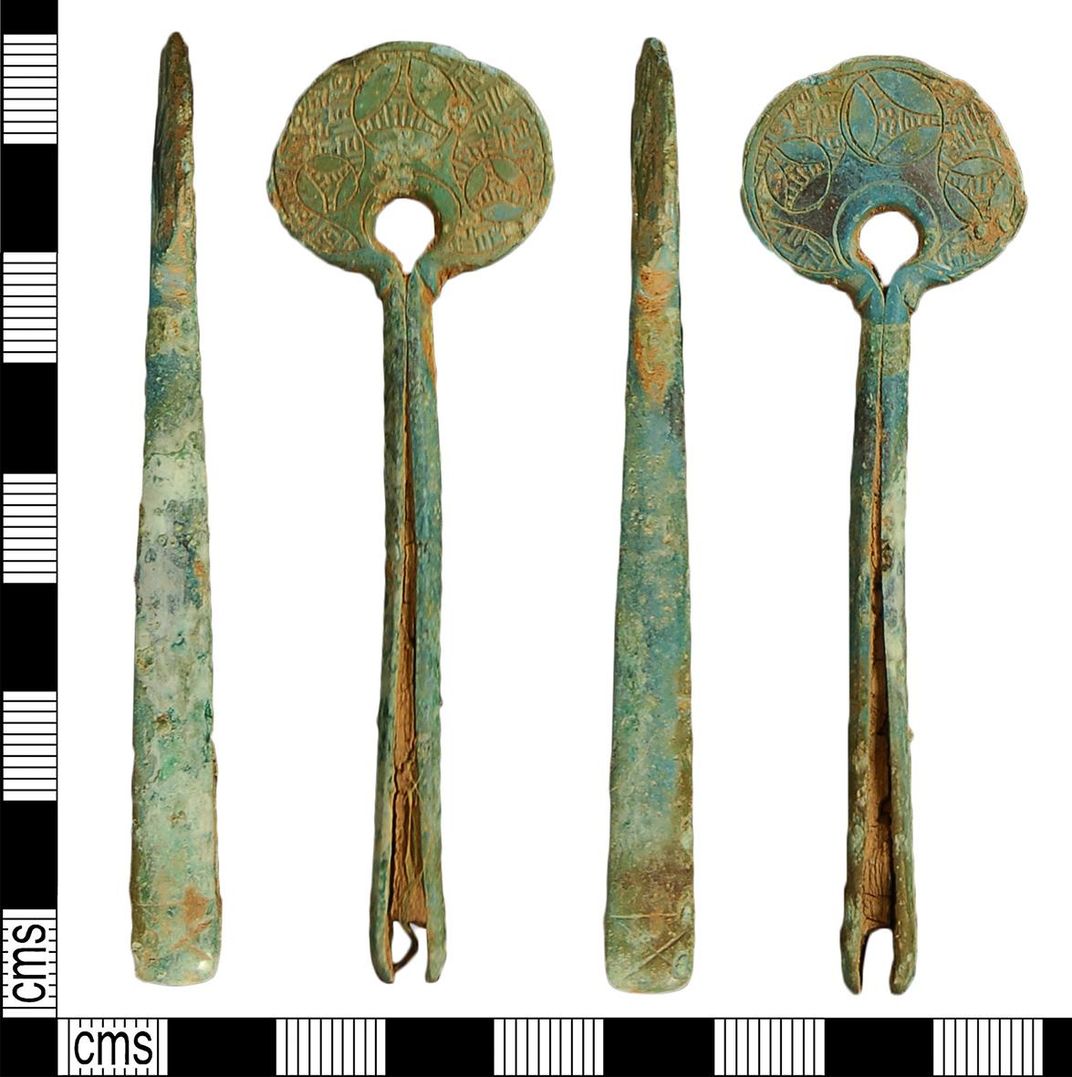Was This Ornament of a Knight Emerging From a Snail Shell a ‘Medieval Meme’?
The unusual image “may be a satirical reference to cowardly or non-chivalric behavior of opponents,” says curator Beverly Nenk
:focal(426x434:427x435)/https://tf-cmsv2-smithsonianmag-media.s3.amazonaws.com/filer/da/b3/dab3b880-53af-4ae1-b5c3-ec66893db274/snail_man.jpg)
Discoveries of objects from hundreds of years ago can help reveal how people worked, played and worshipped—and, perhaps, what they found funny. That’s one interpretation, at least, of a small, medieval-era metal object discovered in West Yorkshire, England, last year, as Craig Simpson reports for the Telegraph. The tiny, carefully crafted silver-gilt mount shows a praying knight emerging from a snail shell, which is balanced on the back of a goat.
“The image … implies an element of parody or satire,” says Beverley Nenk, curator of later medieval collections at the British Museum, in a statement. “Snails are often depicted in the margins of medieval illuminated decorated manuscripts and are thought to symbolize cowardice, and this may be the intended meaning.”
Nenk adds, “The mount may be a satirical reference to cowardly or non-chivalric behavior of opponents in battle, or as a parody of the upper or knightly classes.”
The snail man was one of more than 47,000 archaeological finds made in England and Wales last year. The London museum revealed the artifact this month in its latest Treasure Act Annual Report.
/https://tf-cmsv2-smithsonianmag-media.s3.amazonaws.com/filer/3b/87/3b876ef1-db2d-437f-8093-e22a6d44ffbe/6a00d8341c464853ef019aff95ab29970c-800wi.jpeg)
Per BBC News, the object, which measures less than an inch long, dates to sometime between 1200 and 1350. It may have decorated a leather belt or strap or been worn as a badge.
The museum suggests that the ornament “may have been a form of a medieval meme.” Like today’s internet memes, it appears to take a visual motif from one context and transform it for comic effect. Snails appear frequently in medieval manuscripts, often engaging in combat against armed knights, as the British Library noted in a 2013 blog post.
Some scholars suspect that the image represents an allusion to the biblical resurrection. Another theory is that it’s a kind of visual insult directed at the Germanic Lombard people, who ruled a medieval kingdom in what is now Italy. Per the statement, medieval artists may have been painting the Lombards as “cowardly and malicious” by depicting them as slimy snails.
Alternative explanations for the knight versus snail motif describe it “as a representation of the struggles of the poor against an oppressive aristocracy, a straightforward statement of the snail’s troublesome reputation as a garden pest, a commentary on social climbers, or even as a … symbol of female sexuality,” according to the British Library.
The meme-like remix of this theme in the metal ornament suggests some form of satire, albeit one that may be impossible for 21st-century observers to fully decode.

“What it meant to the owner, or what went through the mind of the maker, ... I just don’t know,” Nenk tells the Guardian’s Mark Brown.
As the curator points out, medieval people enjoyed visual jokes. One common theme was a monkey taking the place of a doctor, examining a flask of urine to diagnose an illness.
The British Museum released information about the ornament as part of its annual Treasure Act report for 2018. The document cites 1,094 official “treasure” cases, 96 percent of which were reported by metal detectorists. In total, discoveries in 2018 comprised more than 20,900 individual artifacts.
In addition to the snail man, the museum included several other 2020 finds in the report. One of these is a medieval seal matrix; engraved with an image of an elephant carrying a castle on its back, the gold object would have been used to seal letters or documents. Nenk tells the Guardian that an artist may have based the image on an elephant who was part of the royal menagerie of Henry III, or on reports of the animals brought back by travelers and Crusaders.
Another discovery from 2020 was a set of objects including a decorated mirror and tweezers. Dated to between 80 B.C. and 100 A.D., the find speaks to the careful grooming habits of some people in late Iron Age Britain.
A treasure hunter who wishes to remain anonymous discovered the snail man in the town of Pontefract. Per the statement, Wakefield Museum, located in nearby West Yorkshire, hopes to acquire the artifact for its collections.
/https://tf-cmsv2-smithsonianmag-media.s3.amazonaws.com/accounts/headshot/Livia_lg_thumbnail.png)
/https://tf-cmsv2-smithsonianmag-media.s3.amazonaws.com/accounts/headshot/Livia_lg_thumbnail.png)